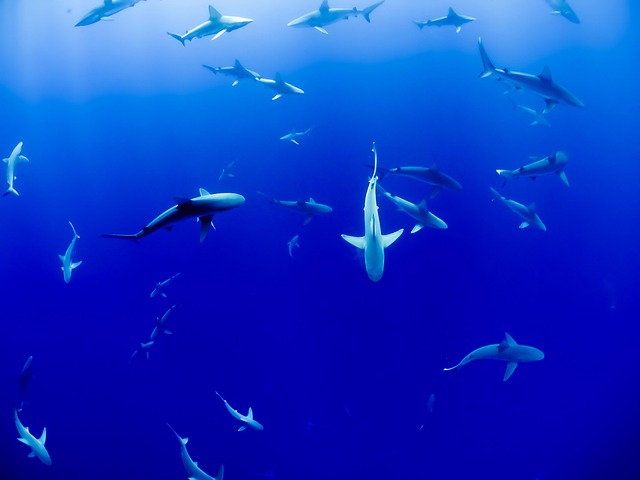Creating a harmonious aquatic environment requires understanding your home aquarium design ecosystem. Balance tank conditions (space, temp, pH, oxygen) and curate species compatibility, plants, decor, and filtration for long-term health. Research natural habitats, incorporate variety like corals & invertebrates, and maintain optimal water quality through regular changes and proper filtration for a thriving, visually stunning microcosm.
Looking to create a vibrant underwater paradise? This guide is your compass. We explore the intricate balance of keeping exotic fish and marine life in harmony within your home aquarium. From understanding ecosystem dynamics to selecting compatible species, we lay out a solid foundation for success. Dive into crucial aspects like optimal home aquarium design, ensuring habitat and well-being. Uncover expert tips for navigating beyond fish compatibility, fostering a thriving aquatic environment.
Understanding Your Aquarium Ecosystem: A Foundation for Success
Creating a harmonious aquatic environment requires a deep understanding of your home aquarium design and its ecosystem. Before introducing exotic fish or marine life, it’s crucial to consider the delicate balance within the tank. Each species has unique needs in terms of space, water temperature, pH levels, and oxygen requirements. Understanding these factors is essential for ensuring the well-being of your aquatic inhabitants.
A successful aquarium is a carefully curated ecosystem where every element plays a part. This includes not only the fish but also plants, decor, and filtration systems. By studying the natural habitats of exotic species, you can replicate their ideal conditions in your home aquarium design. This foundation of knowledge will set the stage for a thriving marine environment where all components coexist peacefully.
Selecting Compatible Exotic Fish Species: The Art of Balance
When designing a home aquarium that showcases exotic fish and marine life, selecting compatible species is an art that requires careful consideration. Balancing the needs and behaviors of different fish is crucial to creating a harmonious aquatic environment. Each species has unique requirements in terms of space, water conditions, diet, and social dynamics. For instance, some exotic fish are solitary by nature, while others thrive in groups, known as schools or packs. Understanding these behaviors ensures that your aquarium becomes a symphony of life where fish coexist peacefully.
Researching the natural habitat and habits of potential additions to your home aquarium is essential. Look for species that share similar environmental needs and temperaments. Certain exotic fish, like angelfish, are known for their peaceful nature and can coexist with smaller, non-aggressive counterparts. In contrast, some larger species may require more space and might not mix well with smaller, timid fish. Achieving the right balance ensures that your aquarium design is not just visually appealing but also sustainable for the long-term health of its inhabitants.
Marine Life Considerations: Beyond Fish Compatibility
When designing a home aquarium, considering exotic fish compatibility is just the beginning. Marine life, including corals, invertebrates, and algae, also play crucial roles in creating a harmonious aquatic ecosystem. Beyond simply matching fish species for compatibility, it’s essential to factor in their environmental needs and interactions. For instance, aggressive fish might stress or damage delicate marine life like coral reefs. Similarly, certain fish produce excess waste that can harm unprotected plants and filter feeders.
A well-balanced home aquarium design incorporates a diverse range of marine life that thrive together, enhancing aesthetics and ecological stability. This involves understanding feeding habits, territorial behaviors, and water quality requirements to create a symbiotic environment where all inhabitants can flourish. By considering these aspects, you’ll not only enjoy a visually stunning aquarium but also foster a thriving microcosm of marine life.
Home Aquarium Design Tips for Optimizing Habitat and Well-being
When designing a home aquarium, creating a habitat that mimics the natural environment of exotic fish and marine life is key to ensuring their well-being. Consider factors like water temperature, pH levels, and salinity—all essential elements that differ across species. For example, some tropical fish thrive in warm, slightly acidic waters, while others prefer colder, more alkaline conditions. Researching each organism’s specific needs allows for tailored habitat design.
Visual aesthetics play a role too. Incorporate diverse hiding spots like caves, plants, and structures to reduce stress and encourage natural behaviors. The layout should balance open swimming areas with secluded corners. Additionally, regular water changes and proper filtration are vital components of home aquarium design, ensuring the water remains clean and conducive to the fish’s survival and longevity.
When curating a diverse home aquarium ecosystem, understanding the intricate dance of compatibility among exotic fish and marine life is key. By carefully considering each species’ unique needs as outlined in this guide—from habitat requirements to social dynamics—aquarium enthusiasts can create a vibrant, balanced underwater world. Incorporating practical tips on home aquarium design further enhances the overall well-being of these remarkable creatures, ensuring their longevity and thriving in your personal aquatic sanctuary.
